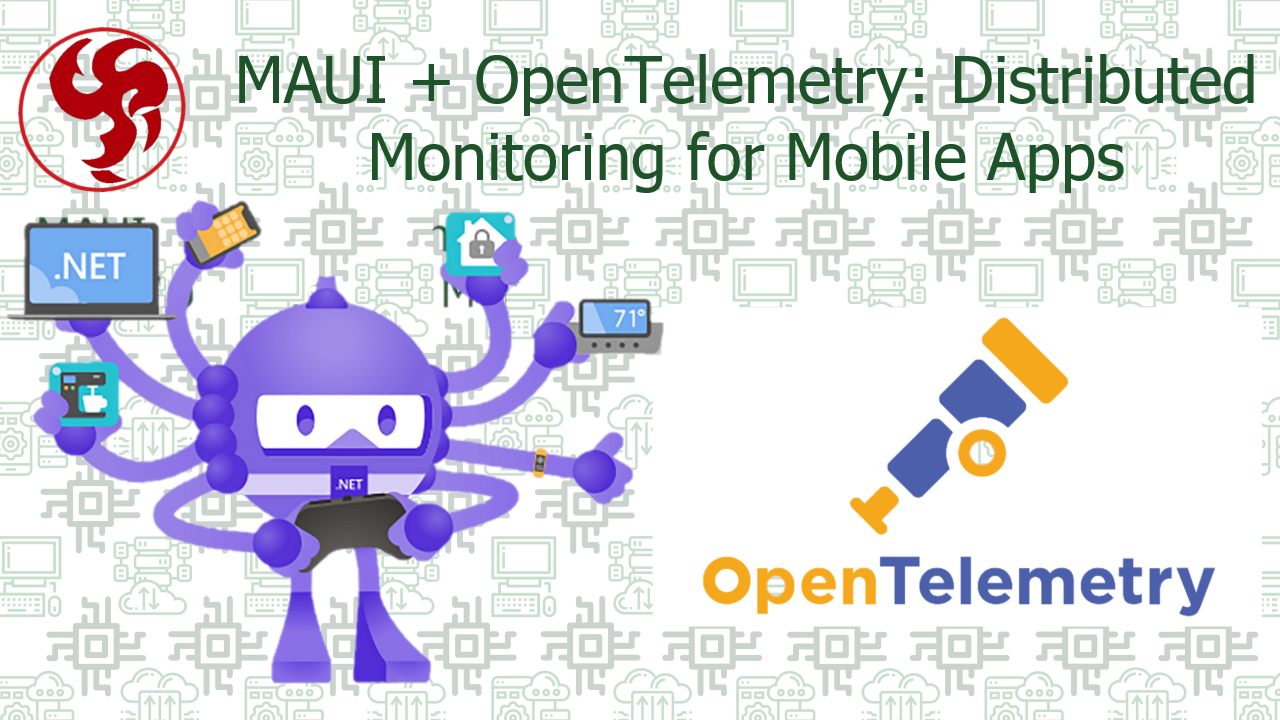MAUI + OpenTelemetry: Distributed Monitoring for Mobile Apps
In today's hyper-connected digital ecosystem, mobile applications have evolved from simple standalone programs to complex distributed systems that interact with numerous cloud services, APIs, and device sensors. For developers using .NET MAUI (Multi-platform App UI) to build cross-platform applications, ensuring comprehensive observability across all these touchpoints is no longer optional—it's mission-critical.
This ultimate guide will take you deep into the world of distributed monitoring using OpenTelemetry, the open-source observability framework that's revolutionizing how we understand application behavior. We'll cover everything from fundamental concepts to advanced implementation strategies, complete with real-world examples, performance optimization techniques, and enterprise-grade best practices.
📜 Table of Contents
The New Reality of Mobile App Complexity
Why OpenTelemetry is a Game-Changer
Deep Dive: OpenTelemetry Components
Step-by-Step MAUI Integration
Advanced Monitoring Scenarios
Performance Optimization Techniques
Enterprise Deployment Strategies
Future of Mobile Observability
🌍 The New Reality of Mobile App Complexity
Modern MAUI applications typically involve:
Multi-Layer Architecture
Critical Pain Points Without Monitoring
| Pain Point | Impact | Frequency |
|---|---|---|
| Unidentified API Latency | 23% cart abandonment | High ⚠️ |
| Silent Background Crashes | 17% user churn | Medium |
| Memory Leaks | App store rating drops | Critical 🔥 |
| Payment Flow Failures | Direct revenue loss | High ⚠️ |
Real-World Example:
A popular shopping app discovered through OpenTelemetry that 40% of iOS users experienced 3+ second delays during checkout due to an unoptimized geo-distributed database query—something traditional crash reporting completely missed.
⚡ Why OpenTelemetry is a Game-Changer
The Observability Trinity
- Traces - Distributed transaction flows
- Metrics - Quantitative measurements
- Logs - Structured event records
Competitive Advantage
| Feature | OpenTelemetry | Traditional APM |
|---|---|---|
| Vendor Neutral | ✅ Yes | ❌ Lock-in |
| MAUI Support | ✅ Full | ❌ Partial |
| Custom Metrics | ✅ Unlimited | ❌ Restricted |
| Cost | ✅ Open-source | $$$ Expensive |
🧩 Deep Dive: OpenTelemetry Components
Architecture Overview
Key .NET Packages
| Package | Purpose | Production Essential? |
|---|---|---|
| OpenTelemetry | Core SDK | ✅ |
| OpenTelemetry.Instrumentation.Http | HTTP calls | ✅ |
| OpenTelemetry.Exporter.OpenTelemetryProtocol | OTLP export | ✅ |
| OpenTelemetry.Extensions.Hosting | DI integration | ✅ |
| OpenTelemetry.Instrumentation.Runtime | GC/Memory stats | Recommended |
🛠 Step-by-Step MAUI Integration
1. Enhanced NuGet Setup
2. Production-Grade Configuration
3. Advanced Instrumentation Example
🚀 Advanced Monitoring Scenarios
1. Cross-Platform Performance Benchmarking
2. User Flow Analysis
3. Real-Time Alert Rules
⚙️ Performance Optimization Techniques
Sampling Strategies
| Strategy | Use Case | Configuration Example |
|---|---|---|
| Head-based | General purpose | new ParentBasedSampler(new TraceIdRatioBasedSampler(0.5)) |
| Tail-based | Error detection | new ConditionalSampler(new ErrorAwareSampler()) |
| Adaptive | Dynamic loads | new RateLimitingSampler(1000spans/sec) |
Context Propagation Best Practices
🏢 Enterprise Deployment Strategies
Multi-Tenant Architecture
Security Considerations
- Data Redaction:
- TLS Configuration:
🔮 Future of Mobile Observability
Emerging Standards
Continuous Profiling (Preview in OTel)
Frontend Monitoring Integration (RUM)
AI Anomaly Detection
🎯 Conclusion: Building Observable MAUI Apps at Scale
By implementing OpenTelemetry in MAUI, engineering teams can:
🔭 Achieve full-stack visibility from device sensors to cloud databases
⚡ Reduce MTTR (Mean Time To Resolution) by 60-80%
📈 Proactively optimize user experience before issues surface
Call to Action:
Start with basic instrumentation today
Gradually adopt advanced features
Contribute back to the OpenTelemetry community
📌 Resources:
